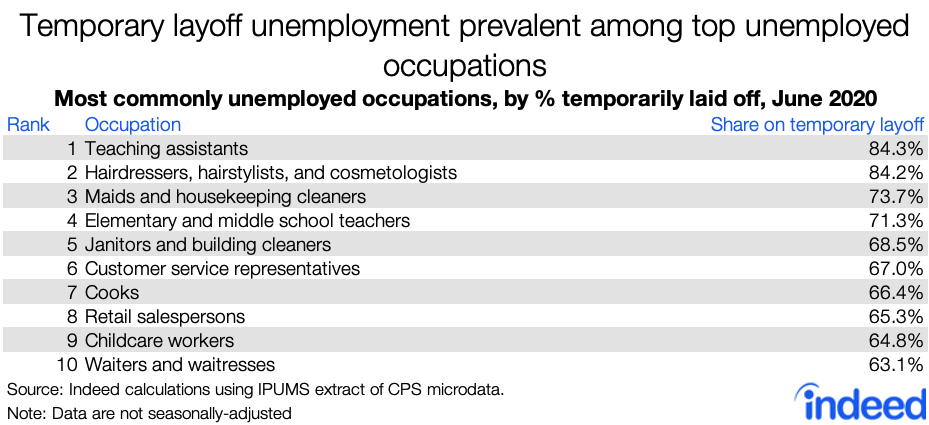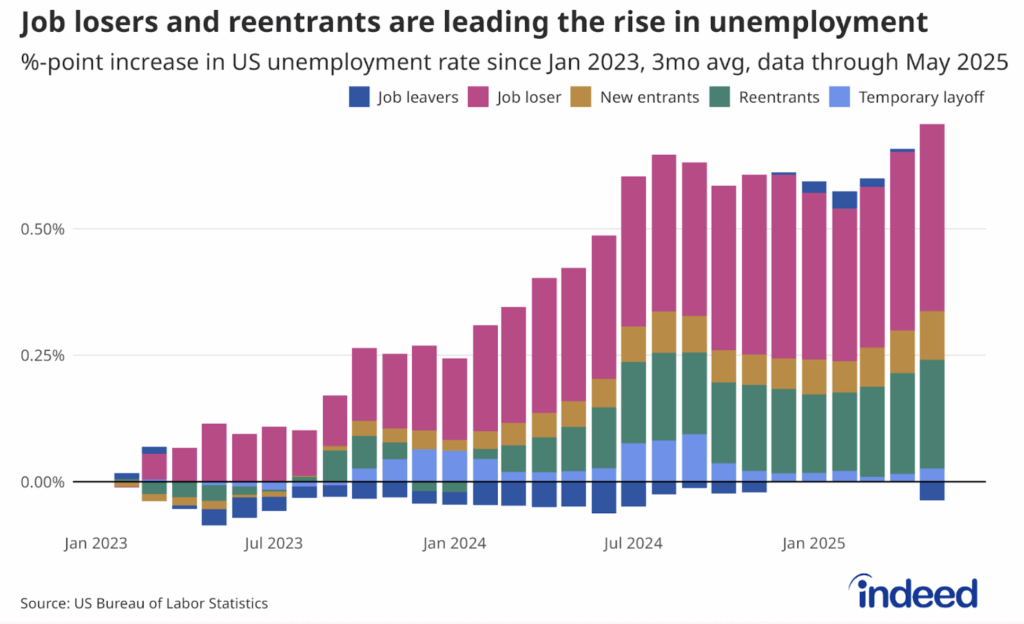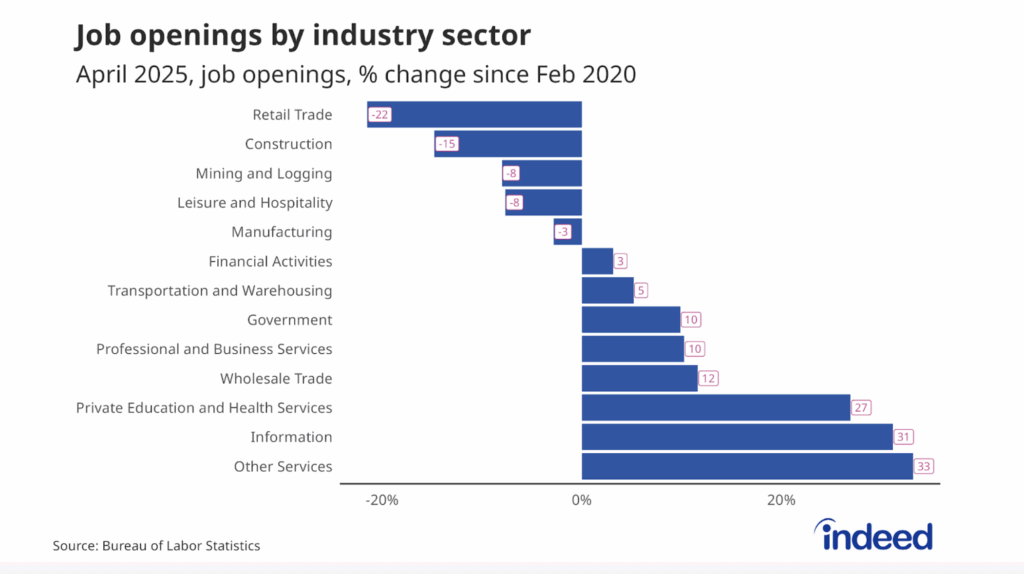The unemployment rate has dropped the past two months, but there is still a threat that the large number of workers on temporary layoff will permanently separate from their employers. The number of unemployed workers who are permanent job losers has risen since March, in part due to workers moving from temporary unemployment into a more enduring form of joblessness.
The magnitude of this threat depends, in part, on where unemployed workers once worked. If the economic activity increases in areas that formerly employed these workers, then they’ll be more likely to return to work. Stagnation or a return to declining activity could mean more workers finding out their layoffs are permanent.
A look at the most commonly unemployed occupations suggests we should be extra vigilant about the outlook for local governments, which employ many educators, beauty and wellness jobs such as hairdresser, hotels, and restaurants. In other words, stronger job growth in these sectors would suggest fewer moves from temporary to permanent layoffs. Slower growth would mean the further calcification of unemployment.
Elsewhere in the July jobs report, I’ll be looking for answers to the following questions:
- Has the overall pace of payroll growth slowed, as suggested by many high-frequency data?
- Is gross job loss still elevated, regardless of gains or losses in total employment?
- Does involuntary part-time employment remain high?






